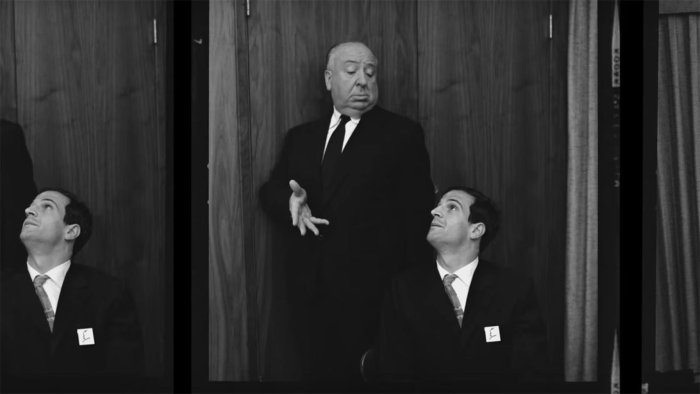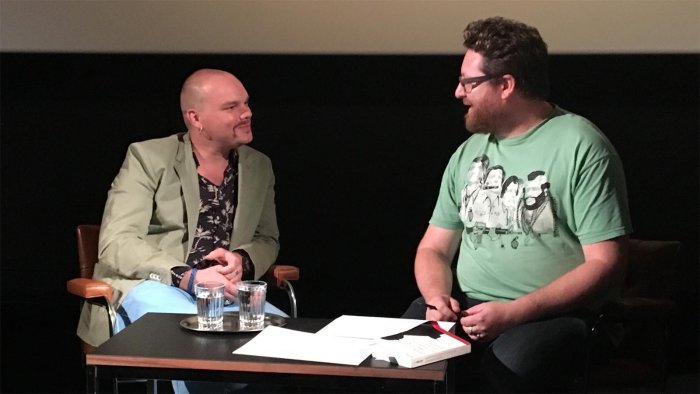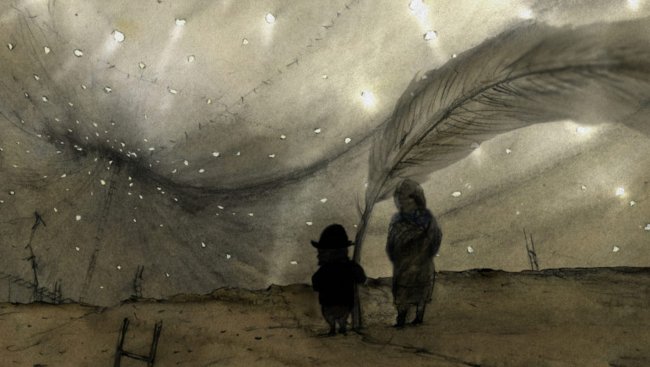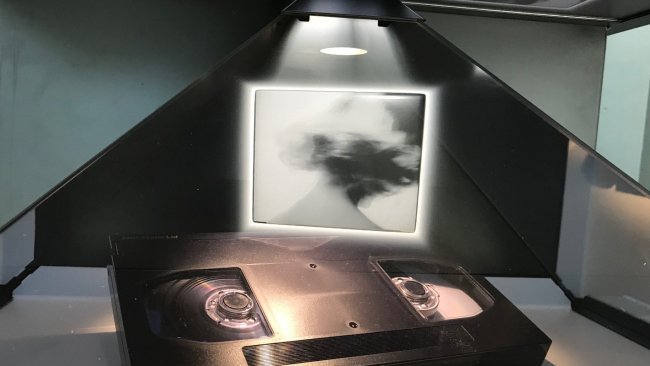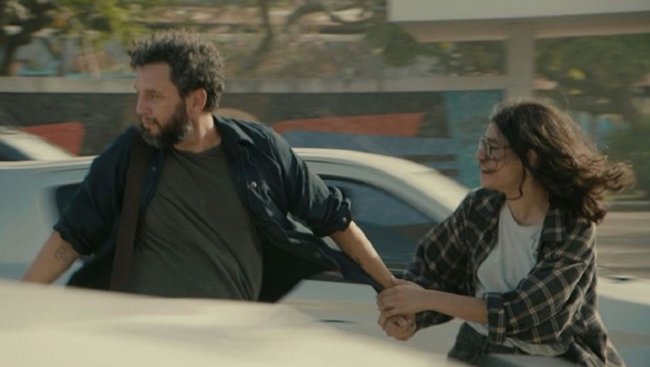Hitchcock/Truffaut
[…] Particularly in the works from his American period, the key to this happy synthesis lies in his constant playing “with” the audience, not “for” the audience. Hitchcock’s suspense, at the core of his cinema, is nothing but an affectionate dialogue with the audience.
[…] Actually, for Truffaut and Jones, the analysis of Hitchcock’s art constitutes nothing more than the construction of the grammar of cinema. Only thanks to this grammar can cinema finally be conceived of in its autonomy.
Text: Giuseppe Di Salvatore
Truffaut meets Hitchcock, 1962, in Beverly Hills. After eight days of interviews, Truffaut published a book that was to become one of his most important works. Kent Jones’ documentary focuses on this meeting, supplementing it with interviews with filmmakers Martin Scorsese, David Fitcher, Peter Bogdanovich, Wes Anderson and many others, in which Hitchcock is the focus of their conversations much more than Truffaut. There is a clear asymmetry between Truffaut and Hitchcock, that of master/disciple, but this is not used by Truffaut to realise the typical emancipatory patricide. For him, and for the other interviewees, it is more a question of a legacy that will enable the emancipatory patricide elsewhere, against other masters and tradition. Therefore, it is not only Truffaut and his colleagues who are completely focused on Hitchcock’s art, but Kent Jones as well. In a way, Jones “assumes” Truffaut’s standpoint and, as a result, we find relatively little information on Truffaut and the confrontation between the French and the British artists. Hitchcok/Truffaut is a learning process for the viewer as well, entirely devoted to the discovery and analysis of Alfred Hitchcock’s art, placing us also at Truffaut’s standpoint.
Jones explores Hitchcock’s mastery from the position of questioning his role as both entertainer and artist. This was originally Truffaut’s question, and understanding this synthesis in Hitchcock can be very instructive. Particularly in the works from his American period, the key to this happy synthesis lies in his constant playing with the audience, not for the audience. Hitchcock’s suspense, at the core of his cinema, is nothing but an affectionate dialogue with the audience. With this question as a starting point, Jones’ rich documentary goes through an informative analysis of more specific aspects of Hitchcock’s art: the importance of controlling the entirety of the production, the mathematical study of the space in framing and dramaturgy, the expressive freedom in the use of the camera, the technical tricks to speed-up and slow-down the time, the mistrust of audio synchronisation, the importance of silence in dialogue (the last two both coming from his background in and preference for silent movies). At times, one would like to go deeper into particular themes, like the centrality of the face and the eye, the relevance of the editing process, the instrumental approach to actors and acting, the obsession with crime (setting aside the exaggerated attention paid to the obvious and elusive theme of the dream…). For that, the Kino Cameo organised a wonderful discussion with John Canciani and Johannes Binotto, the latter being an inexhaustible source of information on Hitchcock’s life and art. Their passionate work made for a perfect continuation of Jones’ study on Hitchcock: dulcis in fundo. We were able to attend a precious moment of criticism, for it is rare to find such a great mixture of knowledge and questioning.
Yet, I came out from the screening of Hitchcock/Truffaut missing Truffaut or, better, missing a certain distance from the meeting of Hitchcock and Truffaut, which would have only given us more hints on the specific position of Truffaut, the differences between the two artists, the historical importance of this enthusiastic meeting. I found it rather astonishing that Kent Jones (as well as Canciani and Binotto) joined Truffaut in his critical but solely enthusiastic stance in front of the master, and that they did not distance themselves enough to be able to put the relationship between Hitchcock and Truffaut at the centre. Why? That is an intriguing question with an interesting answer.
Actually, for Truffaut and Jones, the analysis of Hitchcock’s art constitutes nothing more than the construction of the grammar of cinema. Only thanks to this grammar can cinema finally be conceived of in its autonomy (Hitchcock himself claims this autonomy when he speaks about Psycho). So, the very question in that meeting was the defence of the specificity of cinema, the need to emancipate the cinema from its ancillary position to literature, morals, the audience, etc. Now, one cannot have a distance from what constitutes one’s own grammar. Grammar is something one learns, and then it becomes a question of identity. That is why Kent Jones puts himself in Truffaut’s position and speaks only briefly (at the beginning and end of his documentary) about the implications of that meeting. His focusing on Hitchcock simply means that there is still the need to assume the lesson of this master today to learn and to build one’s own cinematic grammar.
Even if this answer is interesting, it would still have been important to take this infamous meeting as the occasion to go further in the critical consideration of Hitchcock’s legacy, its historical importance, and the meaning of going beyond the grammar of cinema that he – and Truffaut after him – contributed to define. Is there another grammar of cinema that can still defend the autonomy of cinema? That could be an important question today. And a question that may well start from a critical consideration of the meeting between Hitchcock and Truffaut, which would most likely stress the things they did not say.
This article contains a third-party video. If you would like to watch the video, please adjust your settings.
Info
Hitchcock/Truffaut | Film | Kent Jones | FR-USA 2015 | 79’ | Kino Cameo Winterthur
Mathieu Amalric, Wes Anderson, Olivier Assayas, Peter Bogdanovich, Arnaud Desplechin, David Fincher, James Gray, Kiyoshi Kurosawa, Richard Linklater, Paul Schrader, Martin Scorsese
First published: August 23, 2016
